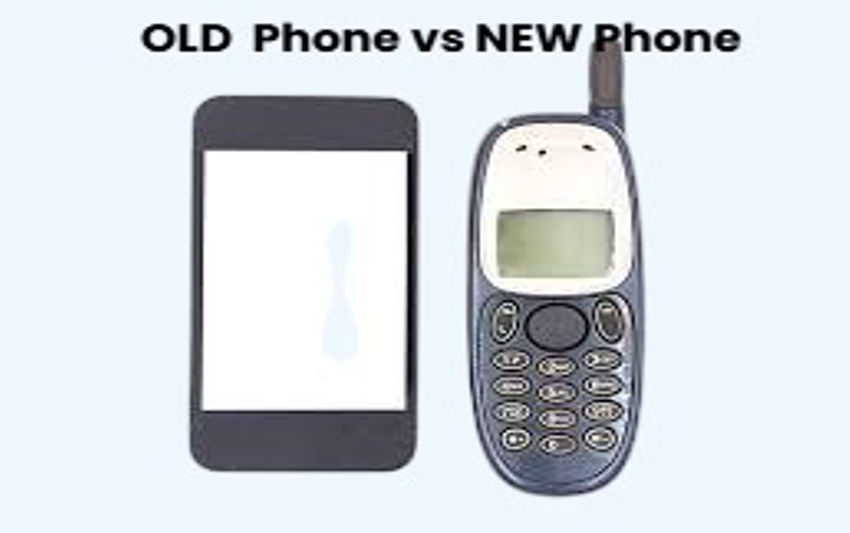Over the past few decades, mobile phones have seen a really dramatic evolution. From the bulky, monochromatic devices of the 1990s to today’s sleek, powerful smartphones, mobile technology has transformed the way we communicate, work, and entertain ourselves. While old mobile phones were designed primarily for calls and texts, modern smartphones are multifunctional devices that serve as cameras, gaming consoles, productivity tools, and more. In this article, we will compare old mobile phones with new smartphone technology, examining their differences in design, functionality, performance, and impact on daily life.
1. Design and Build
Old Mobile Phones
Early mobile phones, such as the Nokia 3310 or Motorola StarTAC, were built for durability. They featured physical keypads, small monochrome or basic color screens, and thick, rugged bodies. Many of these phones had removable batteries and expandable storage via memory cards. Their designs were simple, prioritizing functionality over aesthetics.
New Smartphones
Contemporary smartphones, such as the Samsung Galaxy S24 and iPhone 15, have edge-to-edge touchscreens and small, light designs. They use premium materials such as glass, aluminum, and ceramic, making them more stylish but also more fragile. Physical buttons are minimal, with most interactions happening via touch gestures or voice commands. Water and dust resistance (IP68 ratings) have become standard, but battery replacement is often difficult due to non-removable designs.
2. Functionality and Features
Old Mobile Phones
The primary functions of old mobile phones were calling and texting. Some models included basic extras like calculators, calendars, and simple games (e.g., Snake). Cameras, if present, were low-resolution (0.3 MP to 2 MP), and internet access was slow (2G or early 3G). Storage was limited, often capped at a few megabytes.
New Smartphones
Today’s smartphones are pocket-sized computers. They offer:
– **High-speed internet (5G, Wi-Fi 6)** for streaming and browsing.
– **Advanced cameras (up to 200 MP)** with AI enhancements, night mode, and 8K video recording.
– **App ecosystems (Google Play Store, Apple App Store)** with millions of applications for productivity, entertainment, and social media.
– **Biometric security** (fingerprint scanners, facial recognition).
– **Virtual assistants** (Siri, Google Assistant) for voice-controlled tasks.
– **Mobile payments** (Apple Pay, Google Wallet).
3. Performance and Battery Life
Old Mobile Phones
Older phones had basic processors and minimal RAM, but they were highly efficient. A single charge could last for days (sometimes weeks on standby) because they lacked power-hungry apps and features.
New Smartphones
Modern devices feature **multi-core processors (e.g., Snapdragon 8 Gen 3, Apple A17 Pro)** and up to **24GB of RAM**, enabling seamless multitasking and gaming. However, battery life is shorter (1-2 days with moderate use) due to high-resolution screens, 5G, and background app activity. Fast charging (up to 120W) helps compensate for this.
4. User Experience and Convenience
Old Mobile Phones
These phones were easy to use, with straightforward menus and tactile feedback from physical buttons. They were less distracting, as they lacked constant notifications from social media and emails.
New Smartphones
While smartphones offer unmatched convenience, they can be overwhelming due to constant connectivity and information overload. Features like **always-on displays, foldable screens, and AI-powered automation** enhance usability but also increase dependency on technology.
5. Durability and Longevity
Old Mobile Phones
Many classic phones (like the Nokia 3310) were nearly indestructible. Dropping them rarely caused damage, and their replaceable batteries extended their lifespan.
New Smartphones
Despite advancements like **Gorilla Glass and titanium frames**, modern smartphones are more prone to cracks and water damage. Software updates typically last **3-5 years**, after which devices may become obsolete.
The choice between old mobile phones and new smartphones depends on user needs. If simplicity, durability, and long battery life are priorities, an old-school phone may suffice. However, for those who rely on advanced features like high-speed internet, photography, and apps, a modern smartphone is indispensable.
While nostalgia makes old phones appealing, the convenience and capabilities of new smartphones make them essential in today’s digital world. The future will likely bring even more innovations, such as **foldable screens, AI integration, and extended reality (AR/VR)**, further blurring the line between phones and computers.


